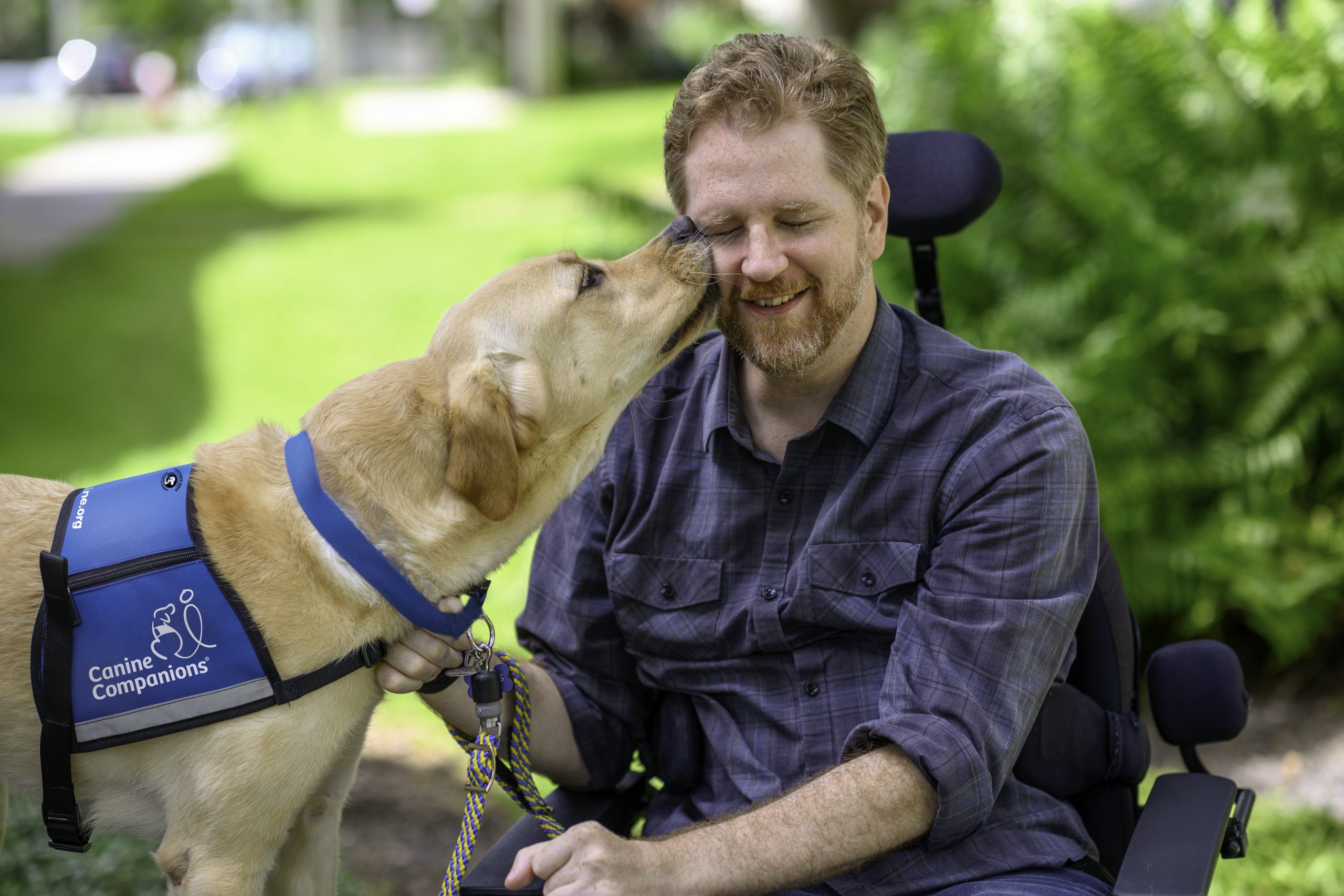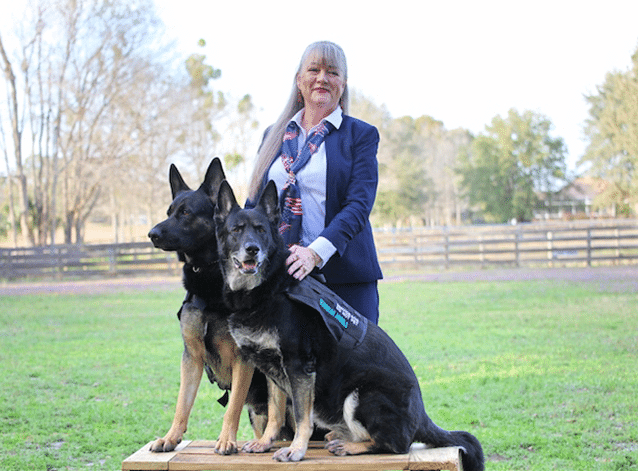Are you wondering, “How do I make my dog a service dog?” If you are considering training your beloved canine companion to become a service dog, you’ve come to the right place. Service dogs provide invaluable support and assistance to individuals with disabilities, and the training process is crucial in ensuring they can perform their duties effectively.
This comprehensive guide will walk you through the steps involved in training your dog to become a service dog. From understanding the temperament and skills required to the specific tasks they can be trained for, we will cover all the essential aspects to help you transform your pet into a certified service dog.
RETIREMENT!
Message from “Mom,” @JoeyRampSampson will retire on May 1; his successor, Pax, will begin official duties that day. Until then, Pax will continue to learn about new environments and how to best assist me for many years. Sampson will assist me on light duty and make… pic.twitter.com/GdXK2J5w0O
— Sampson the Service Dog (@sampson_dog) February 27, 2024
Understanding Service Dogs
Service dogs are specially trained to assist individuals with disabilities and provide support in various tasks. These dogs undergo extensive training to perform specific functions that aid their handlers in daily activities, making them essential companions for those in need.
Types of Service Dogs
Service dogs can be trained for various purposes, including guiding the visually impaired, alerting the hearing-impaired to sounds, assisting individuals with mobility issues, and providing emotional support.
Each type of service dog undergoes specialized training to fulfill the unique needs of their handlers.
Requirements for Training
Training a dog to become a service dog requires dedication, consistency, and patience. It is crucial to work with professional trainers who understand the specific needs of service dogs and their handlers.
- Behavioral Training: Service dogs need to exhibit calm and well-mannered behavior in various situations.
- Task-Specific Training: Dogs are trained to perform tasks tailored to the handler’s needs, such as retrieving objects or providing physical support.
- Socialization: Exposure to different environments and people helps service dogs acclimate to various situations.

Qualifications for a Service Dog
Service dogs play a vital role in assisting individuals with disabilities or specific medical conditions. To qualify as a service dog, certain criteria must be met:
Training Requirements
Service dogs must undergo extensive training to perform specific tasks that help their handlers. They need to exhibit excellent obedience and be able to assist with tasks related to their handlers’ disabilities.
Training programs often focus on tasks like guiding individuals with visual impairments, alerting to medical conditions like seizures, or retrieving items for those with mobility limitations.
Behavioral Standards
Service dogs must demonstrate impeccable behavior in various settings. They should remain calm, non-aggressive, and attentive to their handler’s needs at all times.
- Handler Focus: Service dogs should prioritize their handler’s commands and well-being.
- Social Interaction: They should be comfortable in social situations and around other animals.
- Public Manners: Service dogs must behave appropriately in public places, following established etiquette.

Training Your Dog for Service Work
Training your dog for service work can be a fulfilling journey that requires dedication and patience. When preparing your canine companion for service dog responsibilities, it’s crucial to follow a structured training program.
Basic Obedience Training
Start with basic obedience training to ensure your dog responds to commands promptly. This foundation is essential before moving on to specialized tasks.
Socialization Skills
Expose your dog to various environments and social settings. This helps build confidence and ensures your service dog is comfortable in diverse situations.
- Introduce them to different people
- Expose them to various sounds and environments
Public Access Training
Public access training is a crucial part of transforming your dog into a service dog. This training focuses on teaching your canine companion how to behave in various public settings while remaining calm and attentive to your needs.
Training in Different Environments
Service dogs need to be comfortable and well-behaved in different environments such as busy streets, shopping malls, restaurants, and public transportation. Exposing your dog to various scenarios helps them adapt and respond appropriately.
Consistent exposure to new environments builds confidence in your furry friend.
Socialization with People and Animals
Socialization is key to public access training. Your service dog must be friendly and well-mannered around both people and other animals. Proper socialization reduces the likelihood of your dog becoming anxious or aggressive in public.
- Attend dog-friendly events to help your dog get accustomed to new faces and furry friends.
- Use positive reinforcement to encourage good behavior around others.
Specialized Tasks Training
When it comes to making your dog a service dog, specialized tasks training is crucial. This training involves teaching your canine companion specific tasks that cater to your individual needs or requirements.
Task Identification
Before embarking on specialized tasks training, identify the tasks that will benefit you the most. These tasks could include alerting you to medication times, guiding you through crowded areas, or providing deep pressure therapy.
Task Training Techniques
Utilize positive reinforcement techniques to train your dog for specialized tasks. **Consistency** ****and ****patience** **** are key factors in successful task training. Break down each task into small steps and provide rewards for each successful completion.
Proofing and Maintenance
Once your dog has learned the specialized tasks, practice in various environments to ****proof**** their skills. Maintenance training is essential to keep the tasks sharp and reinforce their training periodically.

Preparing for Certification
When considering how to make your dog a service dog, one crucial step is preparing for certification. Certification ensures that your canine companion meets the necessary standards and requirements to serve as a service dog.
Understanding the Requirements
To qualify for service dog certification, your dog must undergo specific training to perform tasks that assist individuals with disabilities. These tasks can include guiding the visually impaired, alerting to seizures, or providing support for individuals with psychiatric disabilities.
Training Programs and Schools
Consider enrolling your dog in a reputable service dog training program or school to ensure proper training and socialization. These programs offer structured training modules tailored to meet certification standards.
Benefits of Having a Service Dog
Having a service dog provides numerous benefits to individuals with disabilities and other specific needs. These well-trained canines offer not only companionship but also practical assistance for various daily tasks, enhancing their owners’ quality of life.
Enhanced Independence
Service dogs can help individuals become more independent by assisting with tasks such as opening doors, picking up objects, and navigating public spaces. This increased autonomy can boost confidence and self-reliance.
Emotional Support
Service dogs provide emotional support by offering constant companionship and unconditional love. Their presence can help reduce feelings of loneliness, anxiety, and depression, promoting better mental well-being.
Improved Safety
Service dogs are trained to recognize and respond to specific cues related to their owner’s well-being, such as detecting seizures or alerting to allergens. This heightened awareness can prevent potential dangers and ensure the owner’s safety.
Frequently Asked Questions
- What is a service dog?
- A service dog is a specially trained canine that is trained to perform specific tasks to assist individuals with disabilities.
- What are the benefits of having a service dog?
- Service dogs can provide physical assistance, emotional support, and companionship to their handlers, improving their quality of life and independence.
- Can any dog be trained to be a service dog?
- While any breed of dog can potentially become a service dog, certain breeds are more commonly used due to their temperament, intelligence, and trainability.
- How do I start training my dog to be a service dog?
- The first step is to work with a professional trainer who has experience in service dog training. They can assess your dog’s capabilities and help create a training plan.
- What are some tasks that a service dog can be trained to do?
- Service dogs can be trained to perform tasks such as guiding the visually impaired, alerting to sounds for the deaf, retrieving items, providing balance support, and much more.
- How long does it take to train a dog to be a service dog?
- The training timeline can vary depending on the dog’s abilities, the tasks it needs to learn, and the consistency of training. It can take several months to years to fully train a service dog.
Final Thoughts
Training your dog to become a service dog is a rewarding journey that requires dedication, patience, and consistency. By following the guidelines outlined in this blog, you can embark on this transformative process with confidence. Remember, it’s vital to start with a well-behaved and socialized dog, establish a strong bond based on trust, and then introduce specific service tasks gradually. The key to success lies in positive reinforcement, ongoing training, and seeking professional help when needed. Making your dog a service dog is a noble endeavor that can truly change lives, both yours and others’. So, take the first step today and embark on this incredible journey with your canine companion!

